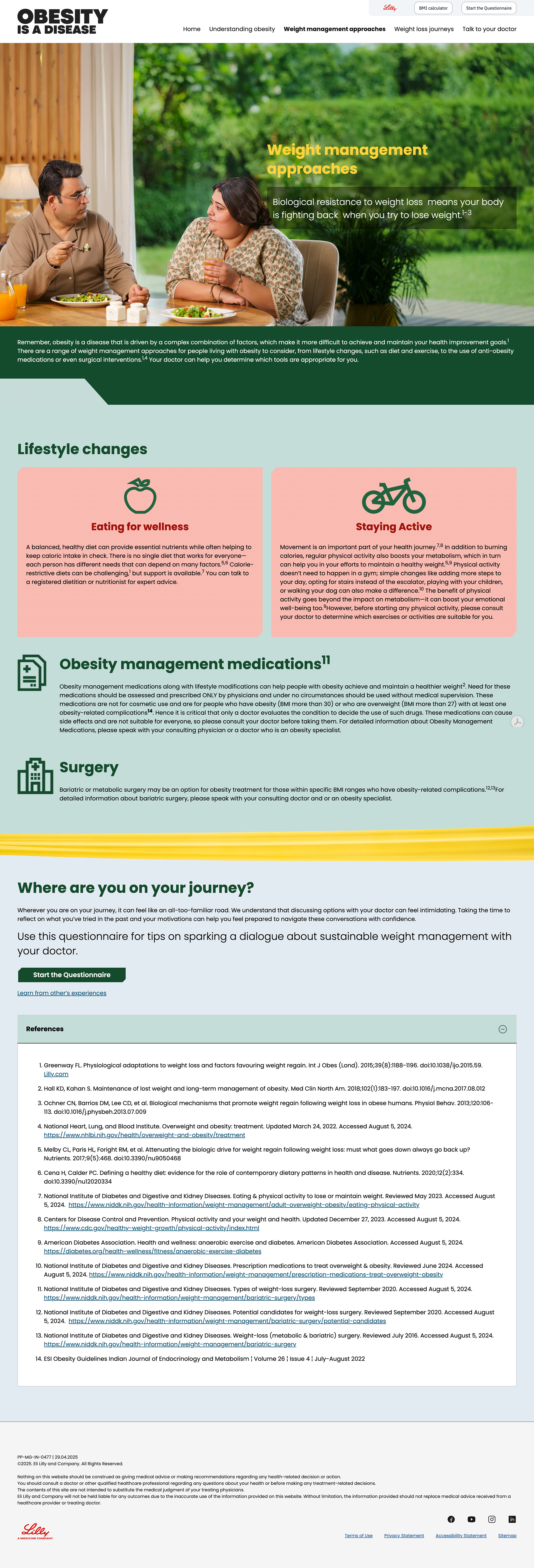Overview:
There are more than 100 million people living with obesity in the US today yet only 1-3% of people are receiving AOMs. People living with obesity are receiving multiple weight loss ads every day and seeing conversations on social media, many of them filled with big, false promises. They have not had sustained success in losing weight despite their best efforts and want a treatment option that is both safe and efficacious.
There are more than 100 million people living with obesity in the US today yet only 1-3% of people are receiving AOMs. People living with obesity are receiving multiple weight loss ads every day and seeing conversations on social media, many of them filled with big, false promises. They have not had sustained success in losing weight despite their best efforts and want a treatment option that is both safe and efficacious.
The target audience may hesitate to seek weight loss advice from their HCP due to past experiences of weight-related stigma and decreased trust. They might expect only generic recommendations like diet and exercise so it's important to encourage them to pursue a more meaningful dialogue with their HCP.
Challenge:
Develop an unbranded campaign website guideline for Eli Lilly's TZP-O global campaign.
Develop an unbranded campaign website guideline for Eli Lilly's TZP-O global campaign.
Strategy - Focus on deliverables
The website guideline should position the site as the central destination for all major media channels, including TV, radio, SEM, social media, influencer partnerships, and print. It must reflect the overarching campaign objective of distinguishing itself within the competitive weight loss management market. This guidance is intended to provide strategic direction for local ( Germany, KSA, Japan, India and China) adaptations of the DSE site, ensuring consistency and effectiveness for global implementation.
Process:
1. Journey Mapping
2. Competitive Analysis - Presented recommendations of competitor websites pro's and con's.
3. Prototype Development - Produced home and secondary pages (wireframes, functional annotations, etc.)
4. Compliance Alignment
5. Development handoff/QA testing
The website guideline should position the site as the central destination for all major media channels, including TV, radio, SEM, social media, influencer partnerships, and print. It must reflect the overarching campaign objective of distinguishing itself within the competitive weight loss management market. This guidance is intended to provide strategic direction for local ( Germany, KSA, Japan, India and China) adaptations of the DSE site, ensuring consistency and effectiveness for global implementation.
Process:
1. Journey Mapping
2. Competitive Analysis - Presented recommendations of competitor websites pro's and con's.
3. Prototype Development - Produced home and secondary pages (wireframes, functional annotations, etc.)
4. Compliance Alignment
5. Development handoff/QA testing
Outcome:
Successfully launched campaign in multiple territories. Due to client contractual guidelines, performance metrics were not shared.
Successfully launched campaign in multiple territories. Due to client contractual guidelines, performance metrics were not shared.
Learnings:
One important lesson we gained was that a global rollout campaign requires tailored approaches—it’s never a one-size-fits-all. Our research included not just the target audience perceptions, but also their customs and personal beliefs about weight management.
One important lesson we gained was that a global rollout campaign requires tailored approaches—it’s never a one-size-fits-all. Our research included not just the target audience perceptions, but also their customs and personal beliefs about weight management.
CLICK ON IMAGE(S) BELOW TO ENLARGE




